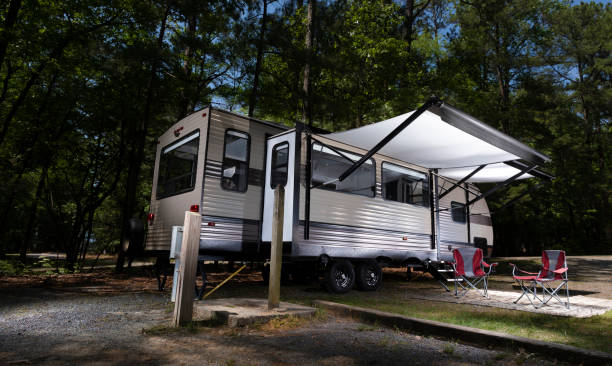Finding the Right Tire for Your Vehicle

So, let’s begin with this question – does size really matter? Before you get too carried away, we are talking about the size of your wheels! The answer is simple- yes, of course, it does. Let us steer you right into the know-hows of buying the right tire size for your vehicle.
Basics
Most people put minimum thought into the process of buying wheels for their vehicles. Tires are an important element for your vehicle’s performance on the road. The ease, traction and grip, all massively depend on the set of tires you have chosen for your vehicle.
Vehicles come in a wide range of sizes, and so do tires. For every vehicle owner, it is important to know the factors that determine your vehicle’s performance. For example, it is basic knowledge that using improper tire sizes can have a damaging effect on the overall condition of your vehicle.
Importance of Choosing the Right Size
Check your vehicle's recommendations strictly to select properly. It is crucial to match your tire and wheel diameter to get the correct ride height and speedometer ratings. For instance, trying to shove a bigger wheel in diameter to a vehicle with a specific size requirement will completely change the ride height. In other words, the body of the car will be much higher from the ground. You will see a difference in the top speed, the speedometer giving you inaccurate readings. Most importantly, the acceleration power will be much slower as well.
If you consider switching to a different tire size for your vehicle, please make sure that it is done following legal requirements and regulations. Don’t forget to closely observe the guidelines and recommendations from the vehicle, wheel, and tire manufacturers.
If you have found the right sized tires for your vehicle, you’d want to stick to this particular one when you replace them. There is a reason for it. Multiple sizes on your wheels will send different signals to your speedometer and can be dangerous. It can damage the anti-lock braking system and hamper the stability system calibrations on your vehicle. This rule is applicable for switching to both sizes, larger and smaller. If you upgrade the size of your tire without checking the fit and measurement on the sidewall of the wheel, it can damage the vehicle’s suspension system. This applies to switching to both smaller and larger tires.
The Bigger, the Better
Firstly, let’s enlighten you with the fact that wheels and tires don’t mean the same thing. Tires are only a part of the entire wheel. The size of the tire depends on the size of the rim of the wheels. You can choose to buy tires based on the size of the rims. Having said that, a vehicle with bigger rims will have the option to fit bigger tires than other vehicles.
Traction and stability improvement
In other words, bigger tires mean better grip. Wider tires on your vehicle mean you will have increased surface area while driving on the road. They are surely better for your vehicle’s traction on the surface of the road. More space for your tires means the vehicle has more to hold onto, enabling it to maneuver better. So these are some of the important factors you need to consider when buying tires. Vehicles have different tire size restrictions than trucks or buses, for obvious reasons. So it’s advised to stick to its specifications and requirements.
Bigger Wheels Mean Bigger Bills
As explained earlier, bigger-sized tires mean a better grip for your vehicle. But it also means higher prices. So have a clear picture of your budget to determine the right fit. You can easily find better and bigger sizes, but it may not be affordable for you. So it’s advised to opt for tire sizes that can fit the rims and your pockets. Overall, bigger tires and wheels are better for increasing your vehicle's traction. It is also important to factor in that tires have to be replaced from time to time, so keep in mind that it is not a one-off purchase.
Smaller Tires on Larger Wheels
Smaller tires also mean wrong sizes. It becomes a safety hazard if you fit a smaller size tire on your large wheels. Unlike bigger size, it doesn’t play up with the speedometer and odometer, but it will definitely have shorter sidewalls. This can cause a blowout when you hit potholes or any other uneven surface.
What does the Right Size Mean?
Simply put, check the wheels, rims, and specifications requirements to match the right-sized tires. It can be tricky, but if not purchased adequately, it can be a big mistake. Firstly, your vehicle's performance will be impacted drastically, leaving you unsatisfied. Purchasing a vehicle itself is costly, so you want to do justice to the money spent on it. The right tire can increase your car's longevity too. So let’s help you figure out how you can determine the right-sized tires for your vehicle.
Finding the Right Size
There are many ways to find the perfect size. The first step is to look for the car manual. There is another way to find the size other than the manual. If you look at the placard on the driver’s door or the tire’s sidewall, you’ll find the size in writing. Multiple websites help you identify the right fit tires for your vehicle. All you need to do is enter your vehicle model and type and let them guide you.
Figures and Numbers
You will notice letters and numbers located on the sidewall of your wheels or the placard of the driver’s side door. These labels contain all the information you need to buy the right size. It may look unfamiliar to you, so let us make it easy for you.
The very first letter on the label means the kind of vehicle the tires are made for. It may mean passenger cars, trucks, buses, heavy cargo vehicles, as well as European cars. The following numbers on the label stand for the width of tires in millimeters. Some of the additional information you may find from the sidewall are details on tire constructions, tire and wheel diameter, load index, and the speed rating of the tires. All the numbers are significant for purchasing the right size. Hopefully, you will gain more perspective after locating the sidewall will all the relevant information.
Conclusion
Keep in mind that upgrading your tires properly has its upsides, but choosing the wrong size has huge disadvantages as well. It’s ideal to do your research so that you are prepared to steer in the right direction while purchasing or replacing your tires. It is also recommended to pay attention while replacing them. Make sure you replace them with the same type if you purchased the right size previously. Tire maintenance is also another factor when it comes to optimizing your car’s performance.
Just a quick reminder to make this choice keeping your safety in mind. Wrong tires can be life-threatening. So prioritize your safety over everything.





